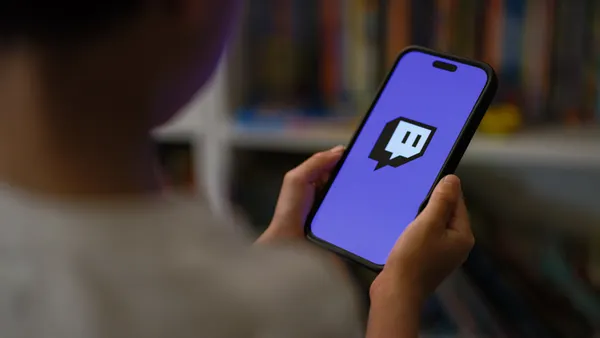In the past few weeks, if you own a social media account, it has been impossible to avoid posts for the “ice bucket challenge.” If you are one of the five people who haven’t seen it, the challenge is to encourage people to post a video of themselves getting ice water dumped on their head to help raise awareness for ASL — commonly known as Lou Gehrig’s disease. The idea is that those challenged either have to post a video of the stunt or donate $100 to ALS Association.
The challenge has exploded across social media and drawn a bit of criticism against what has been dubbed #clicktivism –also known as slacktivism. ‘Slacktivism’ became a prominent buzzword after the #Kony2012 campaign, which went on to become the most viral video on the web, but in turn failed to actually do anything to stop to Ugandan war lord.
However, in the case the ice bucket challenge, the ALS Association has seen a serious spike in donations coming in — the group has received $13.3 million in donations since July 29, compared to $1.7 during the same time period last year.
But is the ice bucket challenge a fluke? Or does the awareness from #clicktivism campaigns drive real results?
The answer is: sometimes. In the case of these 3 viral campaigns, the spreading of ideas actual did spark some real attention to issues that maybe wouldn’t have seen the spotlight.
Here are 3 campaigns where #clicktivism paid off.
1. #Haiti
The world was shocked and sadden when a 7.0 magnitude earthquake hit Haiti in 2010. The natural disaster killed approximately 200,000 people and left countless people homeless. Like so many world events, the tragedy spawned a #Haiti hashtag that inspired 15% of tweets in the week that followed.
A healthy percentage of those tweets was spreading information about how and where to donate to the cause – 2.2 million tweets had both the word “Haiti” and “Red Cross” included. More than 180,000 tweets included the number “90999,” that was a number to text to donate to the Red Cross. Despite criticism of slackvitism in the media for the trending topic, social media did help raise $8 million for the people of Haiti.
2. #TellVicEverything
In early 2012, Canada’s Public Safety minister Vic Toews introduced the Bill C-30, which was legislation that threatened the online privacy of the country’s residents. Toews made the situation even worse when he publicly said “either stand with us or with the child pornographers,” causing a public opposition to not only the online monitoring bill but also to the general public being equated to child pornographers.
A grassroots campaign caught fire on Twitter with the hashtag #TellVicEverything. The campaign encouraged Canadians to flood Toews’ Twitter account with facts about everyday life – a joke about the minister wanting to monitor everything about citizens. Not only did the campaign result in some seriously funny tweets, but the hashtag caught wildfire and other organizations jumped on board with the cause. Open Media formed the Stop Spying coalition which organized a petition to kill the Bill. The Stop Spying coalition utilized the grassroots power of #TellVicEverything to gather nearly 150k signatures for the petition. The government killed the bill about a year after #TellVicEverything went viral.
Hey @ToewsVic, I lost an email from my work account yesterday. Can I get your copy? #TellVicEverything #VicsBackupService
— kevin harding (@kevinharding) February 16, 2012
Hey, @ToewsVic, ovulating. #TellVicEverything
— Tabatha Southey (@TabathaSouthey) February 16, 2012
@ToewsVic I had granola and yogourt for breakfast. No coffee because my milk went bad. #tellVicEverything
— Megan Leslie, MP (@MeganLeslieMP) February 16, 2012
3. #GivingTuesday
The time around Thanksgiving and Christmas has earned a reputation for being the “giving season.” So in 2013, the United Nations Foundation and New York’s 92nd street YMCA teamed up to start a campaign to inspire social media users to spread the word about donations and giving gifts to charitable organizations. The pair started campaigning online to declare the Tuesday after Thanksgiving, Black Friday, and Cyber Monday, to be “Giving Tuesday.” The campaign encouraged social media users to share with the hashtag #GivingTuesday to help make the holiday official.
The second annual #GivingTuesday came around on Dec. 3, 2013 with some impressive stats. Social media users really got behind the hashtags causing #GivingTuesday to be trending for 10 straight hours. Not only did people get behind the hashtags, but online giving was up 90% with the average donation growing from $101 to $142. When #GivingTuesday comes around for the third time in 2014, we may see a tradition that’s here to stay.
It’s #BlackFriday, but I’m looking forward to #GivingTuesday, a reminder of the importance of giving back: http://t.co/eVUIj3Dmsj
— Justin Trudeau, MP (@JustinTrudeau) November 29, 2013
Instead of braving long #BlackFriday lines today, get out the give! Join the global #GivingTuesday movement: http://t.co/v0isZINpTB
— UN Foundation (@unfoundation) November 29, 2013
We've raised $50,000 to help women w #breastcancer know when their chemo's working! @WaveCheckYellow #GivingTuesday pic.twitter.com/XJg7rKGHNP
— MaRS Innovation (@MaRSInnovation) November 27, 2013











